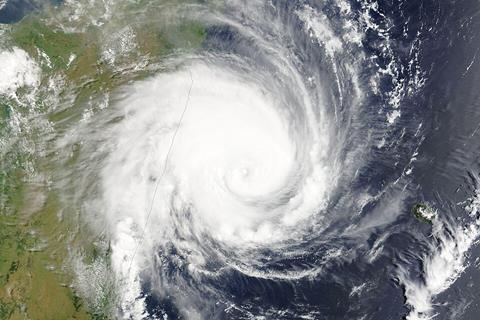Tropical cyclones in Madagascar lead to sharp spikes in malaria infections – particularly in children – due to interruptions in control efforts, according to a new study. However, the findings show that newly introduced long-lasting vaccines can help to mitigate these gaps. This points to pathways to climate-resilient control strategies in malaria-prone regions.

Malaria, already a persistent global health challenge, poses new threats from climate change, not only through rising temperatures that shift mosquito dynamics but also via extreme weather events like tropical cyclones. Such disasters can severely disrupt public health infrastructure, limit access to malaria prevention and treatment, and increase infection risk, especially in high-burden regions where continuity of care and malaria control is critical.
READ MORE: Heatwaves greatly influence parasite burden; likely spread of disease
READ MORE: Mosquito-borne diseases become a global phenomenon in a warmer, more populated world
However, despite concerns, data on how climate-related disruptions affect malaria control remain scarce. Madagascar – a country with a high malaria burden – is increasingly exposed to the effects of climate change, particularly through the growing frequency and intensity of tropical cyclones, which have repeatedly triggered severe damage to healthcare infrastructure.
Malaria infection
Using a longitudinal cohort study of 500 households in Madagascar’s Mananjary district, Benjamin Rice and colleagues analyzed 20,718 observations of malaria infection before and after cyclones Batsirai (2022) and Freddy (2023). This allowed the authors to evaluate how well various malaria interventions performed given the strain of extreme weather events.
According to the findings, published in Science, tropical cyclones in Madagascar significantly elevate the risk of malaria infection and reinfection by disrupting essential public health interventions, including malaria prevention and treatment programs.
In the months following cyclones, malaria infection surged, particularly in children: up to half of school-age children and over a third of younger children were infected in high-transmission areas.
Malaria vaccines
By modeling various control strategies, the authors found that the recently introduced malaria vaccines, which offer up to 10 months of protection, could significantly reduce symptomatic infections and help sustain malaria infection control during climate-related intervention gaps.
Despite this, Rice et al. note that malaria vaccines alone are insufficient to stop transmission, adding that layered strategies combining vaccines, drug-based prevention, and traditional tools like bed nets are essential, especially in high-transmission areas where malaria remains persistent.







No comments yet